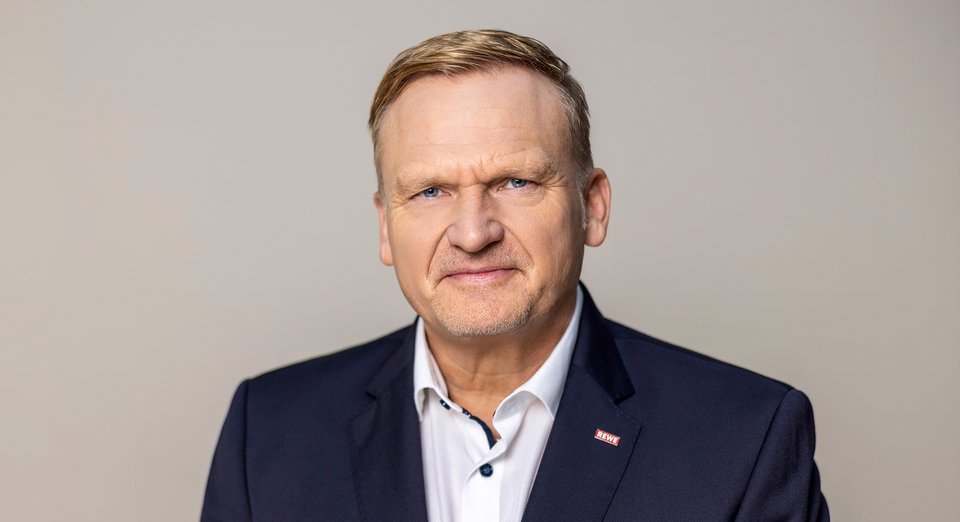
It has been more than half a year since REWE disposed of its paper brochures in the waste paper bin once and for all and started using more environmentally friendly methods to inform customers about special offers in its stores.
Many alternatives to the flyer
Instead of having to wait for the printed weekly flyer, our customers can now find out about the bargains in their REWE store anytime and anywhere: in the REWE app, online at rewe.de/angebote, or in the newsletter (rewe.de/newsletter) or via WhatsApp. In addition, the weekly offers are increasingly advertised in traditional media such as TV, radio and daily newspapers.
„We want to reach customers of all ages on the channels they use every day.“ said Elke Wilgmann, Head of Marketing at REWE, in June last year, when the flyer fluttered into letterboxes for the last time.
one: Mr Maly, for more than 90 years, the flyer was considered irreplaceable for food retailers and was part of everyday life for generations of consumers. Wasn't the decision to discontinue what had been the most important advertising medium accompanied by a little melancholy as well as courage?
Peter Maly: We were already aware that we would revolutionise the way millions of people in Germany planned their weekly shopping with the abolition of the printed flyer. After all, we printed and distributed 25 million leaflets every Saturday - more than twice the total circulation of all daily newspapers in Germany. No other advertising medium is as established in the food retail sector. Changing this was previously unthinkable. But based on our sustainability strategy, we have repeatedly shown courage in the past, questioned the old and consistently introduced more sustainable alternatives. In this respect, we were indeed the first German food retailer to bid farewell to a piece of retail history. Yes, courage was certainly part of it, but I wouldn't call it melancholy, but certainly the realisation that we were able to accompany a historic turning point in the food retail sector.
one: How would you summarise the situation after more than six months? How have customer frequency and revenue developed since then? Are there still complaints from customers or from our retailers? Have we been able to attract more young customers?
Peter Maly: The test results from our project in the regions have been fully confirmed in the national rollout. We are continuing to see positive, stable business development with sales growth above the previous year. We have also not seen any significant changes in customer development following the discontinuation of the flyer. This applies to both loyal regular customers and price-sensitive customers. There were only a relatively small number of customer complaints at the beginning of the changeover. However, this quickly calmed down and is now almost no longer an issue at all.
one: To what extent have the forecasts regarding the lasting effect of the flyer changeover materialised? In other words: Have the estimates been confirmed in terms of paper and CO2 savings?
Peter Maly: I can only answer this question with a resounding "Ja!". Here too, the findings from the extensive tests in the regions have been fully confirmed over the last six months.
one: It speaks in favour of the strong REWE brand if the flyer medium is apparently not needed at all to attract people to our stores. Has buying behaviour changed? For example, is there more or less demand for the 300 special offers every week?
Peter Maly: We haven't noticed any change in purchasing and consumer behaviour; all the offers continue to be very popular. This is certainly also due to the fact that the offers are well presented in our stores. So many thanks to the store teams!
one: How has the media mix worked out? Which of the alternative marketing channels - from the app to television - are used most frequently/intensively by our customers?
Peter Maly: We are continuously testing the optimal media mix, which means that we are now able to address our customers in a much more flexible, varied and individualised way across many channels. In my opinion, one of the most important media channels should and will be the REWE app. We are doing everything we can to strengthen and optimise this medium.
one: REWE not only wanted to invest the money saved by doing away with paper brochures in alternative advertising formats, but also donate it to sustainability projects. What can you say about this?
Peter Maly: We have also kept and realised this promise. Last year, for example, REWE invested around 5.6 million euros in the Nabu climate fund.
one: What #rethinkable steps is REWE planning next, and can you already say something about the other SBUs, for example PENNY, toom or Travel and Tourism?
Peter Maly: The next big #umdenkbar step will be our new customer loyalty programme, which will be launched in 2025. Another important #umdenkbar step is our new national model building specification for our second-generation REWE Green Buildings. Our colleagues from the other REWE Group companies continue to monitor developments very closely, but they certainly cannot simply copy Switch one-to-one, as they operate in different competitive and customer environments.
one: Do you already see signs that competitors are following suit?
Peter Maly: Individual competitors have already followed suit, but every retailer should prepare systematically and thoroughly - it should be well planned.
